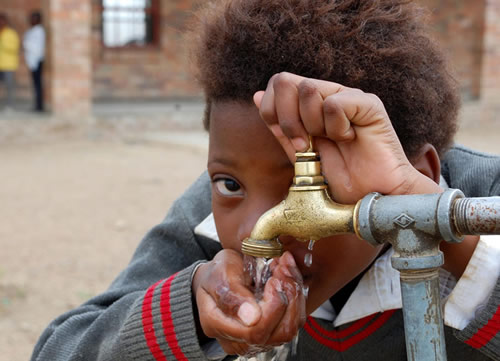More South Africans have water supplied to their homes, there are fewer bucket toilet systems and more homes have been connected to the electrical grid. There are more children in school and more South Africans have access to affordable primary healthcare.
 A newly released Statistics South Africa report, the 2016 General Household Survey, shows that life has improved for most South Africans over the years. We are healthier, more educated and there are more households being kept safe from the elements, thanks to government housing.
A newly released Statistics South Africa report, the 2016 General Household Survey, shows that life has improved for most South Africans over the years. We are healthier, more educated and there are more households being kept safe from the elements, thanks to government housing.
The safety net of social grants has expanded with 17 per cent more South Africans accessing grants. In 2003, just 12.7 per cent of eligible individuals received some form of government help. Today, 29.9 per cent of South Africans receive assistance to cover basic expenses. The number of South Africans who go to bed hungry today is 13.4 per cent of the population, less than half of what it was a decade ago.
In a country where unemployment and extreme poverty remain challenges, 44.8 per cent of households receive assistance to keep food on the table and the lights on. According to the report, households from all population groups receive help from government. “More than one-third of black African individuals (32.9 per cent) receive a social grant, compared to 27.2 per cent of coloured individuals, 11.5 per cent of Indian/Asian individuals and 6.2 per cent of the white population.”
An educated and healthy population
More South African children are in school and attend schools that are better equipped and safer. However, the country needs to do more to get school leavers to attend vocational colleges instead of sitting at home.
In 2016, approximately 86.9 per cent of South African individuals above the age of five years who attended educational institutions were in school, while a further 4.8 per cent attended tertiary institutions. By comparison, only 2.3 per cent of individuals attended Technical Vocational Education and Training colleges.
The country is also making advances in early childhood education. About 41.3 per cent of 0- to 4-year olds attend early learning programmes at day care centres, crèches, playgroups, nursery schools and pre-primary schools.
Post-matric vocational education and adult literacy have been identified as areas that still need intervention, especially in more rural provinces. Adult literacy rates in the Northern Cape (89.8 per cent), North West (90.1 per cent) and Limpopo (90.7 per cent), lagged behind the national average of 94.4 per cent.
Government improvements have made the public health system more accessible and, to a large degree, safer than previously. In 2016, 71.4 per cent of households used public clinics and hospitals as their first point of access when family members fell ill or became injured.
Brighter and happier households
The number of South Africans living in homes they call their own has increased from 5 per cent in 2002 to 13.5 per cent in 2016, thanks in part to the RDP programme. And while there are concerns about the quality of a minority of the homes, more citizens have homes.
More homes are electrified or are partly powered by renewable energy. The number of electrified households has increased from 77 per cent in 2002 to 84.2 per cent last year.
There have also been increases in the number of homes that have piped water. Only 3 per cent of households in the country have to fetch water from rivers, streams, stagnant water pools, dams, wells and springs.
Again, rural provinces lag behind in supplying clean piped water directly to homes. According to the findings, “The majority of households in the Western Cape (94.3 per cent) and Gauteng (90.7 per cent) had access to adequate sanitation, while about half those in Limpopo (57.1 per cent) and 67.4 per cent in Mpumalanga had adequate access. Nationally, the percentage of households without sanitation, or with bucket toilets, decreased from 12.3 per cent to 4.2 per cent between 2002 and 2016.”



 Facebook
Facebook Twitter
Twitter WhatsApp
WhatsApp